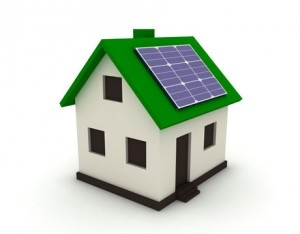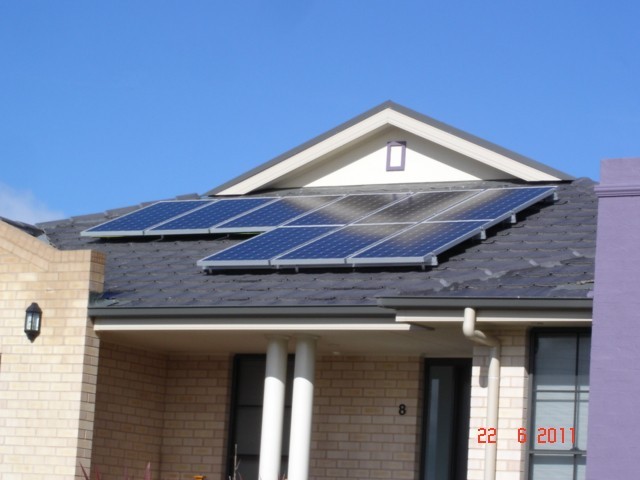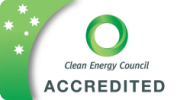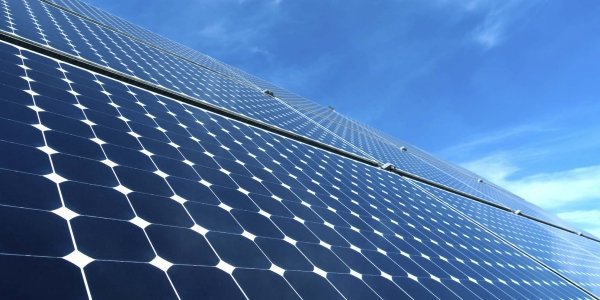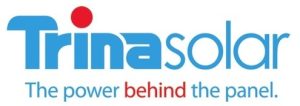Grid Connect System
While the technology behind solar power may seem complex, when broken down, grid connect is easy to understand as it only requires a few components installed in your home or business.

Picture above explains how a GRID CONNECT PV solar system works.
Grid connect means that the PV solar system when operating can send power back out into the electricity net work. The inverter will only switch on and send power to the house or back into the grid when the electricity supply is available from the network. This means that in the event of a blackout the grid connect system will not be on. This is for safety reasons.
Whenever the sun shines, the solar cells generate electricity. The grid connect inverter converts the DC electricity produced by the solar panels into 240V AC electricity, which can then be used by the property/household. If a grid connect system is producing more power than is being consumed, the surplus is fed into the mains power grid. The excess power fed back into the grid is recorded on the net meter in the meterbox. Depending on who you purchase your electricity from will depend on how much you will get credited for this power.A good website to compare prices offered from different companies is IPART’s website My Energy Offers click http://www.myenergyoffers.nsw.gov.au/ to get advice on how to choose the right retailer for you.
When the solar cells are not producing power, for example at night, your power is supplied by the mains power grid as usual. The energy retailer charges the usual rate for the power used. As all of the components in a grid connect system have no moving parts, you can expect a long and hassle free life from your solar power system!
Installing a grid connect solar system
Most customers choose a roof mounted solar system. For most of Australia, the modules should be north facing in order to take full advantage of the sun. We will aim to install the modules at an angle which ensures that the glass face of the modules is positioned at 90 degrees to the sun for most of the day. As an example, in Sydney this angle would be approximately 20-30 degrees to the horizontal. Standard Australian roofs usually have an angle of elevation of ~22 degrees, which is acceptable. This provides a close approximation to the position in which a solar array produces its maximum output. For installations on flat roofs an elevated array frame allows the solar modules to be installed at an angle of elevation of approximately 30 degrees from the horizontal.
What’s the right size system? How much will it cost?
As everyone’s needs are different and the generation potential of solar power differs from place to place , To determine what sized grid connect system you’ll need you will need to take into consideration when you consume the power and what your consumption is. This can be done by looking at your previous power bills in conjunction with what time of day the power was used. A wireless monitoring system can be temporarily set up in your meter box also to track all of this information as well.
Because PV solar systems rely on the sun to produce electricity they are generally producing at their optimum between the hours of the day when the sun is highest in the sky (10am to 2pm). This is for systems configured facing north and at an angle between 20 to 30 degrees. If you use more power of an afternoon the panels can be fitted on the west facing roof thus using the evening sun to your advantage. This is all part of the design process to design a system that best fits your needs. Your power usage can be modified by the use of timers to turn on appliances when the PV system is working.
Government incentives and rebates
Don’t forget; you’ll save money if you qualify for the government rebate in the way of STC. Small-scale technology certificates, or STCs, are a tradable commodity attached to eligible installations of renewable energy systems (including solar panels, solar water heaters and heat pumps). Under the Federal Government’s Small-scale Renewable Energy Scheme (SRES), when you install an eligible system, you may claim a set number of these STCs. This number is based on the amount of electricity in megawatt hours (MWh):
• generated by your small-scale solar panel, wind or hydro system over the course of its lifetime of up to 15 years; or
• displaced by your solar water heater or heat pump over the course of its lifetime of up to 10 years,
Where one STC equals one megawatt hour (MWh) of electricity generated or displaced.
These STC are calculated for each system and are usually offered as a discount off the cost of the installation price. An STC form is filled out and signed by the customer allowing the installer to claim them back through the Government Clean Energy Regulator.
Get started on your solar electric grid connect system today.
Contact 0408440358 today for free, no-obligation advice or to arrange a time for a quote.




